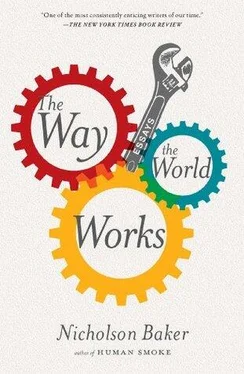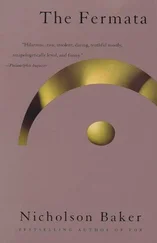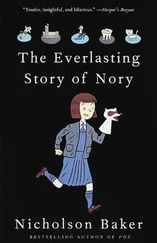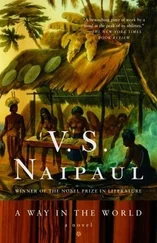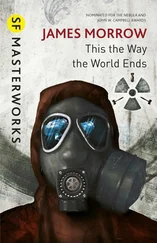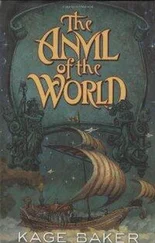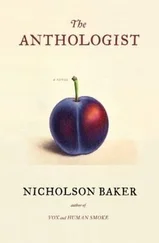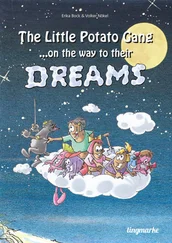As the deletions and ill will spread in 2007—deletions not just of webcomics but of companies, urban places, websites, lists, people, categories, and ideas — all deemed to be trivial, “NN” (nonnotable), “stubby,” undersourced, or otherwise unencyclopedic — Andrew Lih, one of the most thoughtful observers of Wikipedia’s history, told a Canadian reporter: “The preference now is for excising, deleting, restricting information rather than letting it sit there and grow.” In September 2007, Jimbo Wales, Wikipedia’s panjandrum — himself an inclusionist who believes that if people want an article about every Pokemon character, then hey, let it happen — posted a one-sentence stub about Mzoli’s, a restaurant on the outskirts of Cape Town, South Africa. It was quickly put up for deletion. Others saved it, and after a thunderstorm of vandalism (e.g., the page was replaced with “I hate Wikipedia, its a far-left propaganda instrument, some far-left gangs control it”), “Mzoli’s” is now a model piece, spiky with press citations. There’s even, as of January, an article about “Deletionism and inclusionism in Wikipedia”—it, too, survived an early attempt to purge it.
My advice to anyone who is curious about becoming a contributor — and who is better than I am at keeping his or her contributional compulsions under control — is to get Broughton’s Missing Manual and start adding, creating, rescuing. I think I’m done for the time being. But I have a secret hope. A librarian, K. G. Schneider, recently proposed a Wikimorgue — a bin of broken dreams where all rejects could still be read, as long as they weren’t libelous or otherwise illegal. Like other middens, it would have much to tell us over time. We could call it the Deletopedia.
(2008)
I ordered a Kindle 2 from Amazon. How could I not? There were banner ads for it all over the Web. Whenever I went to the Amazon website, I was urged to buy one. “Say Hello to Kindle 2,” it said, in tall letters on the main page. If I looked up a particular writer on Amazon — Mary Higgins Clark, say — and then reached the page for her knuckle-gnawer of a novel Moonlight Becomes You, the top line on the page said, “ Moonlight Becomes You and over 270,000 other books are available for Amazon Kindle — Amazon’s new wireless reading device. Learn more.” Below the picture of Clark’s physical paperback ($7.99) was another teaser: “Start reading Moonlight Becomes You on your Kindle in under a minute. Don’t have a Kindle? Get yours here.” If I went to the Kindle page for the digital download of Moonlight Becomes You ($6.39), it wouldn’t offer me a link back to the print version. I was being steered.
Everybody was saying that the new Kindle was terribly important — that it was an alpenhorn blast of post-Gutenbergian revalorization. In the Wall Street Journal, the cultural critic Steven Johnson wrote that he’d been alone one day in a restaurant in Austin, Texas, when he was seized by the urge to read a novel. Within minutes, thanks to Kindle’s free 3G hookup with Sprint wireless — they call it Whispernet — he was well into Chapter 1 of Zadie Smith’s On Beauty ($9.99 for the e-book, $10.20 for the paperback). Writing and publishing, he believed, would never be the same. In Newsweek, Jacob Weisberg, the editor in chief of the Slate Group, confided that for weeks he’d been doing all his recreational reading on the Kindle 2, and he claimed that it offered a “fundamentally better experience” than inked paper did. “Jeff Bezos”—Amazon’s founder and CEO—“has built a machine that marks a cultural revolution,” Weisberg said. “Printed books, the most important artifacts of human civilization, are going to join newspapers and magazines on the road to obsolescence.”
Lots of ordinary people were excited about the Kindle 2, too — there were then about fifteen hundred five-star customer reviews at the Kindle Store, saying “I love my Kindle” over and over, and only a few hundred bitter one-stars. Kindle books were clean. “I’ve always been creeped out by library books and used books,” one visitor, Christine Ring, wrote on the Amazon website. “You never know where they’ve been!” “It has reinvigorated my interest in reading,” another reviewer said. “I’m hooked,” another said. “If I dropped my kindle down a sewer, I would buy another one immediately.”
And the unit was selling: in April, tech blogs had rumors that three hundred thousand Kindle 2s had shipped since the release date of February 24. Bezos wrote a letter to shareholders: “Kindle sales have exceeded our most optimistic expectations.” He went on The Daily Show and laughed. (See the YouTube video called “Jeff Bezos Laughing Freakishly Hard on The Daily Show with Jon Stewart.”)
Amazon’s page showed a woman in sunglasses sitting on a beach with a Kindle over her knee. Below that were video testimonials from big-name writers like Michael Lewis and Toni Morrison, recycled from the launch of the original Kindle, in the fall of 2007. James Patterson, the force behind a stream of No. 1 Times best-sellers, said that he enjoyed reading outdoors, where he had, he confided, a “wonderful back yard, nice pool, and all that.” Patterson was pleased to discover, while Kindling poolside, that the wind didn’t make the book’s pages flutter. “There’s just the one page,” he explained. Neil Gaiman had moved from skeptic to “absolute believer.”
Well, well! I began to have the mildly euphoric feeling that you get ten minutes into an infomercial. Sure, the Kindle is expensive, but the expense is a way of buying into the total commitment. This could forever change the way I read. I’ve never been a fast reader. I’m fickle; I don’t finish books I start; I put a book aside for five, ten years and then take it up again. Maybe, I thought, if I ordered this wireless Kindle 2 I would be pulled into a world of compulsive, demonic book consumption, like Pippin staring at the stone of Orthanc. Maybe I would gorge myself on Rebecca West, or Jack Vance, or Dawn Powell. Maybe the Kindle was the Bowflex of bookishness: something expensive that, when you commit to it, forces you to do more of whatever it is you think you should be doing more of.
True, the name of the product wasn’t so great. Kindle? It was cute and sinister at the same time — worse than Edsel, or Probe, or Microsoft’s Bob. But one forgives a bad name. One even comes to be fond of a bad name, if the product itself is delightful.
It came, via UPS, in a big cardboard box. Inside the box were some puffy clear bladders of plastic, a packing slip with “$359” on it, and another cardboard box. This one said, in spare, lowercase type, “kindle.” On the side of the box was a plastic strip inlaid into the cardboard, which you were meant to pull to tear the package cleanly open. On it were the words “Once upon a time.” I pulled and opened.
Inside was another box, fancier than the first. Black cardboard was printed with a swarm of glossy black letters, and in the middle was, again, the word “kindle.” There was another pull strip on the side, which again said, “Once upon a time.” I’d entered some nesting Italo Calvino folktale world of packaging. (Calvino’s Italian folktales aren’t yet available at the Kindle Store, by the way.) I pulled again and opened.
Within, lying faceup in a white-lined casket, was the device itself. It was pale, about the size of a hardcover novel, but much thinner, and it had a smallish screen and a QWERTY keyboard at the bottom made of tiny round pleasure-dot keys that resisted pressing. I gazed at the keys for a moment and thought of a restaurant accordion.
Читать дальше
